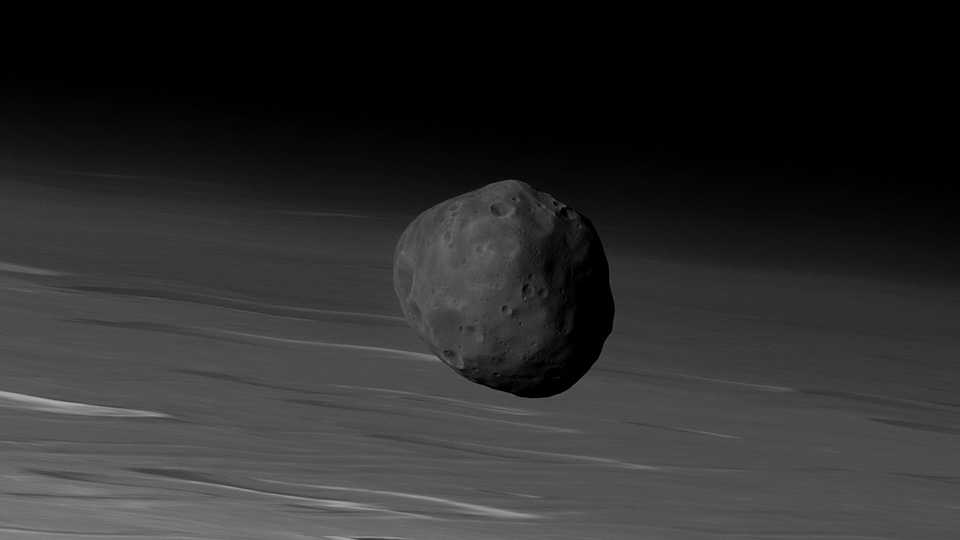Universe Update
The Martian Ring Cycle

We’ve known for a while that Mars’s larger moon, Phobos, is going to come to a violent end in a few million years. In fact, we discussed the future of Phobos a couple of times back in 2015, both about how the moon will eventually be ripped apart by tidal forces and should end up as a ring around Mars. But it turns out the story doesn’t stop there! NASA-funded scientists at Purdue University have published this week in Nature Geoscience that when Phobos does end up as a ring around Mars, it may not have been the first time.
The northern hemisphere of Mars is dominated by a huge basin called the Borealis Basin, taking up about 40 percent of the planet’s surface. It’s likely that this basin was formed from an impact about 4.3 billion years ago. According to Andrew Hesselbrock, one of the two heads of the new study, “That large impact would have blasted enough material off the surface of Mars to form a ring.” The model that Hesselbrock and David Minton have developed shows that after this ring formed it would have eventually clumped together to form a moon. That moon would then slowly be pulled towards Mars, and would eventually be ripped apart by Mars’s gravity once it reached the Roche limit.
What’s new about their model is the suggestion that this isn’t the first time this process has happened—and it may not be the last. Depending on where the Roche limit of Mars is, Minton and Hesselbrock think this cycle could have happened three to seven times already, with a moon forming, ripping apart, forming a ring, and a new moon forming again.
Which means that Phobos may not have formed 4.3 billion years ago, as previously thought. According to their model, it’s very unlikely that Phobos could have been around that long, as that would imply it would have passed too close to Mars’s other moon, Deimos, at some point in the past. If Phobos and Deimos had interacted gravitationally in the past, there should be signs of the interaction. However, Deimos’s orbit lines up very well with Mars’s equator, suggesting its orbit hasn’t moved much in its lifetime.
Understanding the repeating cycle of rings and moons could also help to explain some surface features on Mars. According to this model, as the ring formed, rock and debris would have rained down on Mars. “You could have had kilometer-thick piles of moon sediment raining down on Mars in the early parts of the planet’s history, and there are enigmatic sedimentary deposits on Mars with no explanations as to how they got there,” Minton said. “And now it’s possible to study that material.” Minton and Hesselbrock plan to continue their studies by either focusing on how the first set of rings formed or on the material that would have rained down onto Mars.
If their theory turns out to be correct, then perhaps Phobos isn’t really doomed after all! Maybe its violent end in a few million years will result in a new beginning…
Image: ESA